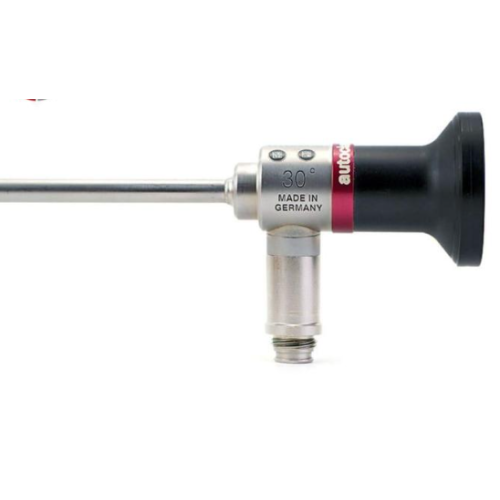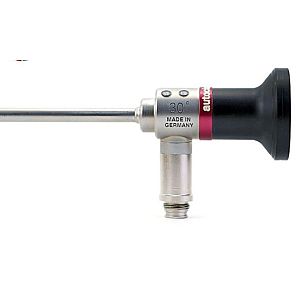The Smith & Nephew 7208332 rigid laparoscope is a reusable surgical instrument designed for illuminating and visualising internal structures during endoscopic procedures. With a diameter of 5 mm and a viewing angle of 30°, it offers optimal image quality for laparoscopic procedures. This model is autoclavable, ensuring effective sterilisation between uses. Its robust stainless steel design and high-precision optical components ensure durability and consistent performance. It is compatible with Smith & Nephew camera systems and accessories, meeting the requirements of modern surgical environments.
Rigid Laparoscope 7208332 - Perfect Condition


Offer Details
Options :
laparascope smith nephew 7208332 dyonics 30 degree 5mm rigidscope 29.5cm
Description
Autoclavable rigid laparoscope for laparoscopy – precision and reliability
The Smith & Nephew model 7208332 is a rigid laparoscope designed for laparoscopic procedures requiring clear and accurate visualisation of internal cavities. With a diameter of 5 mm and a viewing angle of 30°, it allows optimal exploration of the target areas while minimising invasiveness. This device is specifically designed to be autoclavable, ensuring effective sterilisation in accordance with hospital standards.
Optical quality is ensured by sapphire lenses and a robust stainless steel construction in accordance with ASTM F899. The optical system is protected against thermal and mechanical damage, and the optical surfaces are designed to resist wear while maintaining high light transmission.
Technical design for optimal surgical performance
The 7208332 laparoscope has a working length of 291 mm and a total length of 346 mm, providing sufficient reach for abdominal procedures. Its 70° field of view allows for extensive observation without the need for frequent repositioning. The light is positioned "opposite", facilitating integration with compatible camera systems and light cables.
Compatibility with Smith & Nephew accessories, such as fibre optic cables and camera heads, ensures seamless integration into surgical environments. This model is designed for use with steam sterilisation systems (autoclave), as well as chemical methods such as ethylene oxide or STERRAD®, provided that specific precautions are followed.
Safety, maintenance and durability – a reliable investment
It is recommended that all components be disassembled prior to sterilisation to ensure the effectiveness of the process. Optical surfaces should be thoroughly cleaned with enzymatic solutions, isopropyl alcohol and acetone, followed by rinsing with distilled water.
This model is designed to withstand high autoclave temperatures, but should not be exposed to ultrasonic cleaning methods, which could damage the seals and optical surfaces. If deposits form on the lenses, cleaning with aluminium oxide powder is recommended only before sterilisation.
Regular maintenance includes inspecting the lenses for cracks or scratches and checking the fibre optic system to ensure optimal light transmission. Any abnormalities must be addressed immediately to preserve image quality and extend the life of the device.
Features
- Reusable instrument designed for laparoscopy
- Compatible with Smith & Nephew camera systems
- Autoclavable for effective sterilisation
- 30° viewing direction for optimal observation
- Wide field of view (70°)
- Robust stainless steel construction
- Sapphire lenses for superior image quality
- Opposed light position for improved ergonomics
Technical Details
- Type: Rigid laparoscope
- Needle diameter: 5 mm
- Viewing angle: 30°
- Working length: 291 mm
- Total length: 346 mm
- Field of view: 70°
- Light position: Opposite
- Eyepiece diameter: 31.75 mm
- Sterilisation: Autoclavable
- Materials: Stainless steel (ASTM F899), sapphire lenses